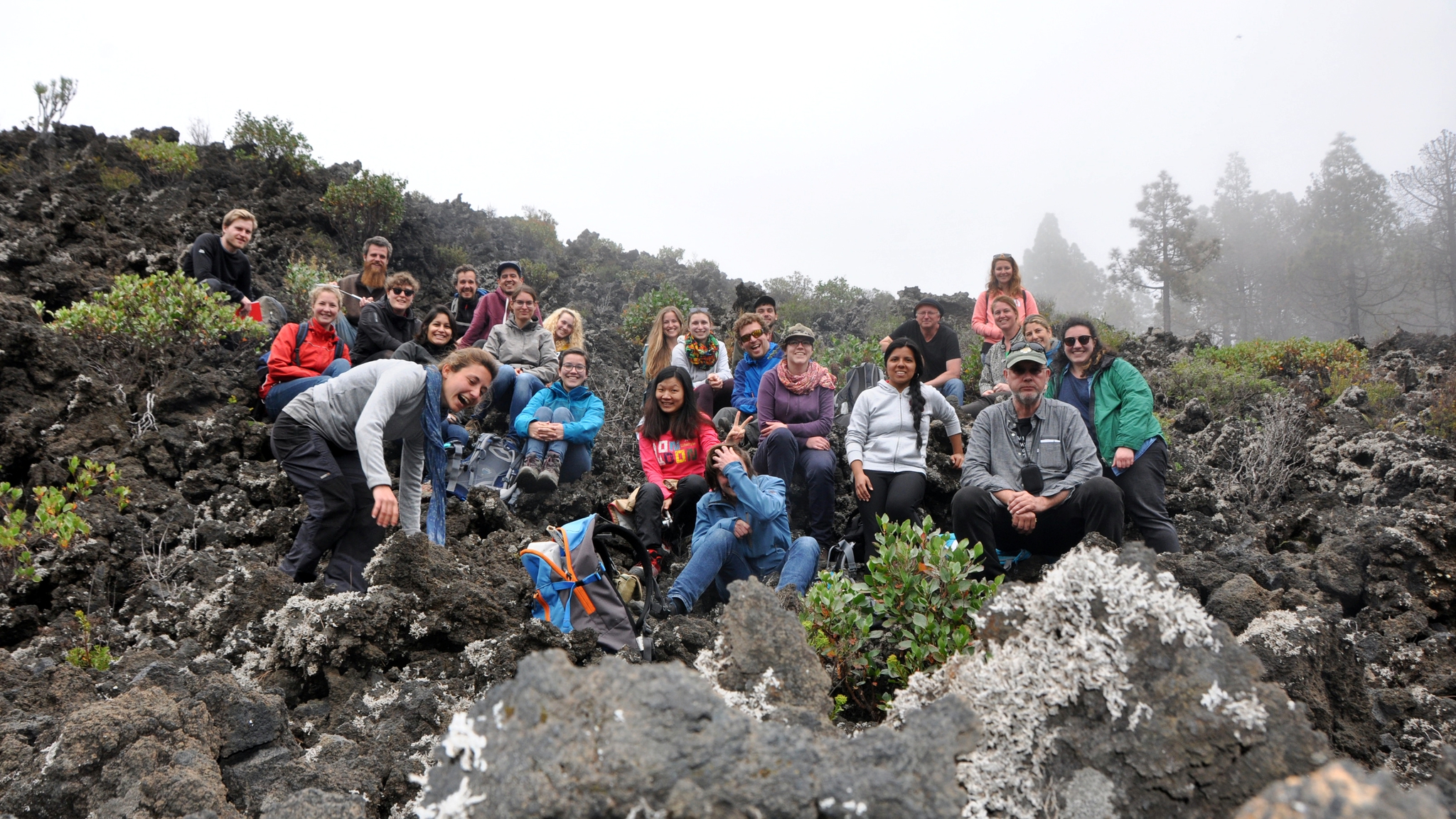La Palma Science School 2017
Interactions between Climate and Biodiversity
La Palma, Canary Islands - Spain. February 17 to March 3, 2017.
The aim of this Science School – as in other years - is to gather students with interests alike on interactions between climate and biodiversity in several working groups, in order to develop and implement research concepts and methodologies for short studies during a two week field period.
Topics for this year’s La Palma 2017 Science school focused on spatial patterns of fire in pine forest, Remote sensing techniques , invasive species in protected areas, endemisms and biotones along an elevation gradient, among others.
Participating Lecturers and Guest researchers were Prof. Richard Field (University of Nottingham, UK), Prof. Alessandro Chiarucci (Università di Bologna, Italy), Prof. José-Maria Fernandez-Palacios (Universidad de La Laguna, Tenerife, Spain), Dr. Severin Irl (University of Bayreuth, Germany), Prof. Carl Beierkuhnlein (University of Bayreuth, Germany), Prof. Anke Jentsch (University of Bayreuth, Germany), among others.
The 2-week field work experience was accompanied by other activities such as Scientific Writing seminars – organized by Guest Lecturers, field trips to natural sightseeing places on the Island e.g. Salineras de San Antonio, Barranco de las Angustias and Puerto de Tazacorte, as well as informal meetings among students (February carnival in Santa Cruz and in Los Llanos de Aridane Cities).
Participants of this year’s Science school included not only Global Change Ecology M.Sc students, but also Geoecology M.Sc from the University of Bayreuth, and PhD and Post-Doc Students from the University of Bologna, Italy.
About La Palma:
The island of La Palma is completely protected as MAB biosphere reserve and hosts a national park (Caldera de Taburiente) and Natura 2000 sites. Human population density and pressures are rather low in comparison with other islands. The climatic conditions are very diverse, also because of the prominent elevation that reaches up to more than 2400 m a.s.l. which is above the tree line. Large parts of the island are covered by natural Canary Pine forests and by laurel forests. Sub-recent volcanism took place until 1971 creating young lava flows and vast lapilli fields.

La Palma Group 2017 - Photo courtesy by Thomas Schmitt

